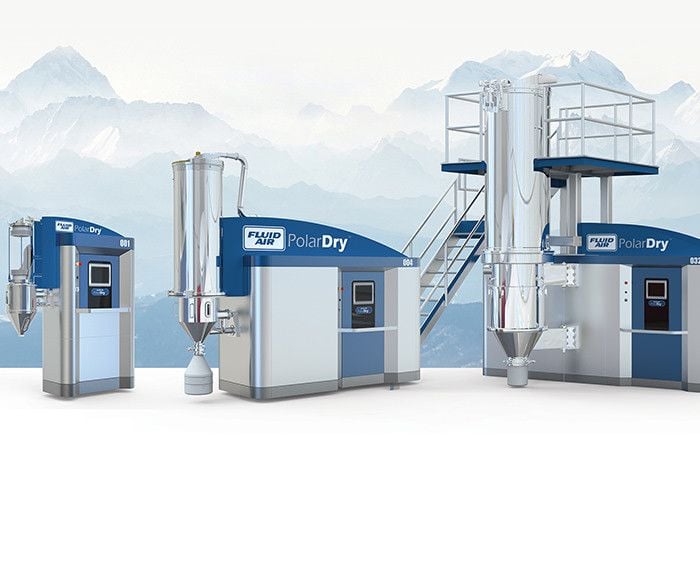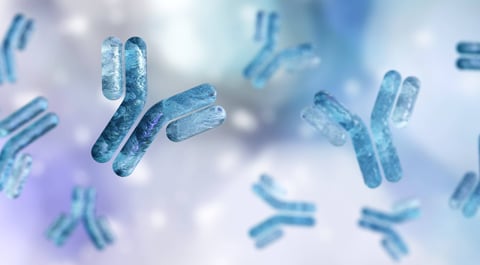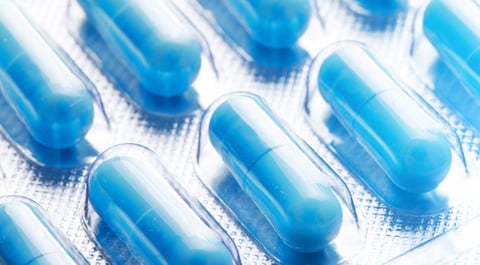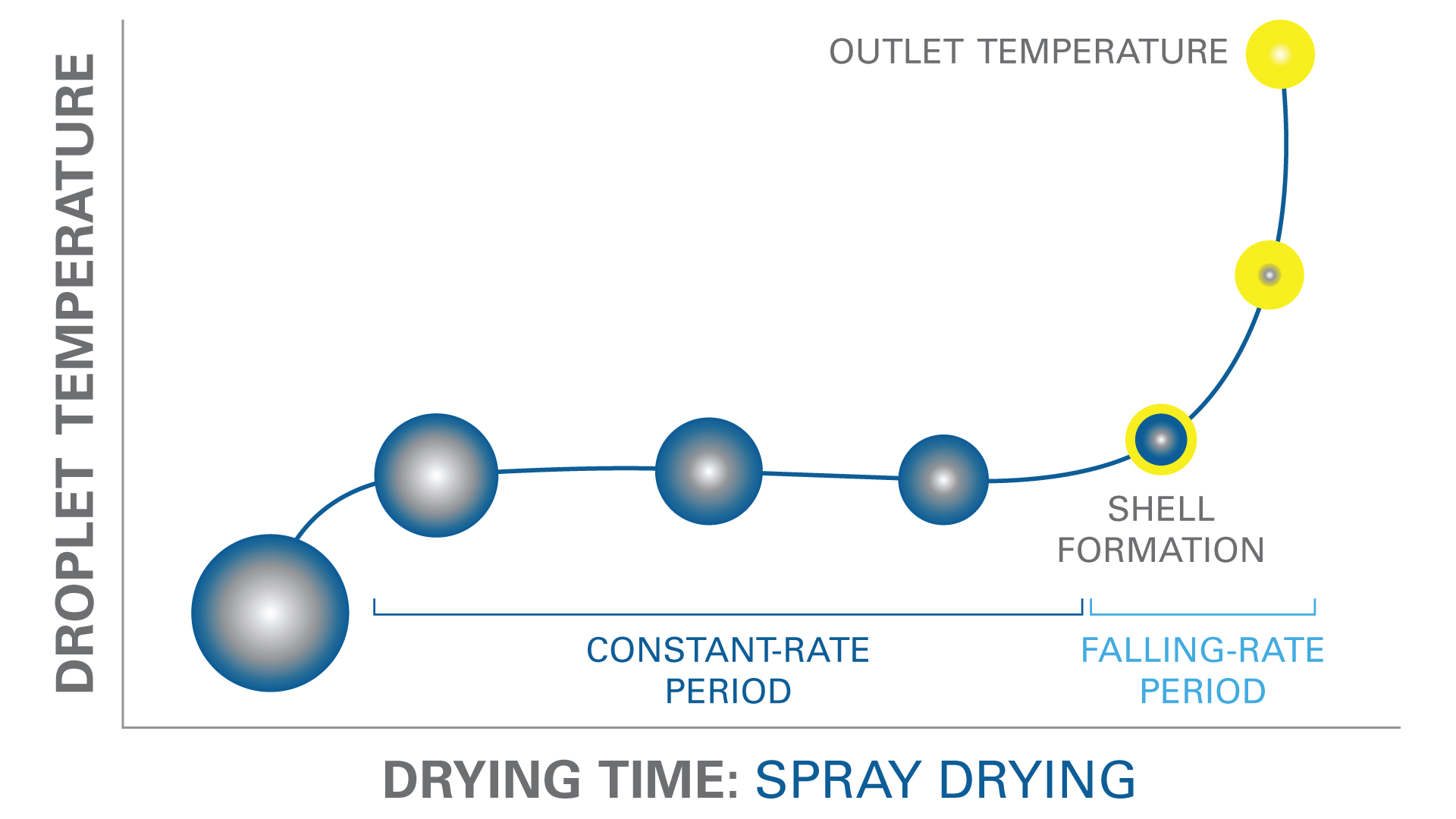
Spray Drying Overview
In traditional spray drying and the PolarDry® electrostatic drying process, liquid droplets are atomized and sprayed into a stream of drying gas to create a dry, powdered material.
In traditional spray drying, there are two distinct phases:
1. During the constant-rate phase, the majority of heat transferred to the droplet is latent, used to drive the evaporation of the solvent. As more solvent evaporates, the solid content of the outer layer of the droplet forms a solid shell, but the core remains wet.
2. Next comes the falling-rate phase, during which the temperature is raised to fully evaporate the remaining solvent. This can cause problems for temperature-sensitive actives such as microorganisms, probiotics, and proteins.
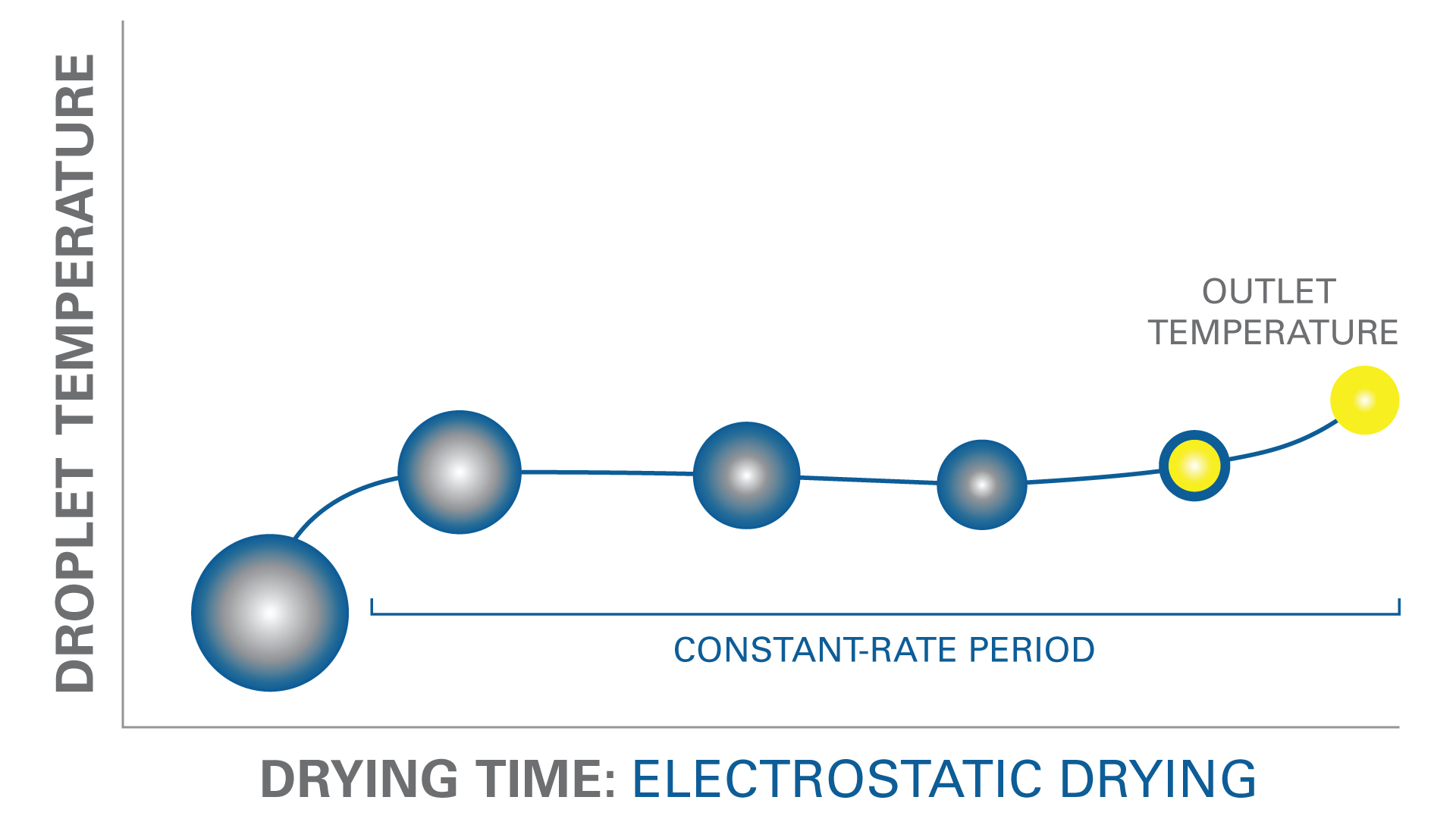
In the PolarDry low-temperature drying process, the electrostatic effect is used to stratify droplet components based on their polarities. With feedstock in a polar solvent, solid materials are driven to the inside of the droplet and the solvent is driven to the outside. This prevents shell formation and eliminates the need for the falling-rate drying period, allowing fast, efficient drying at a lower temperature.
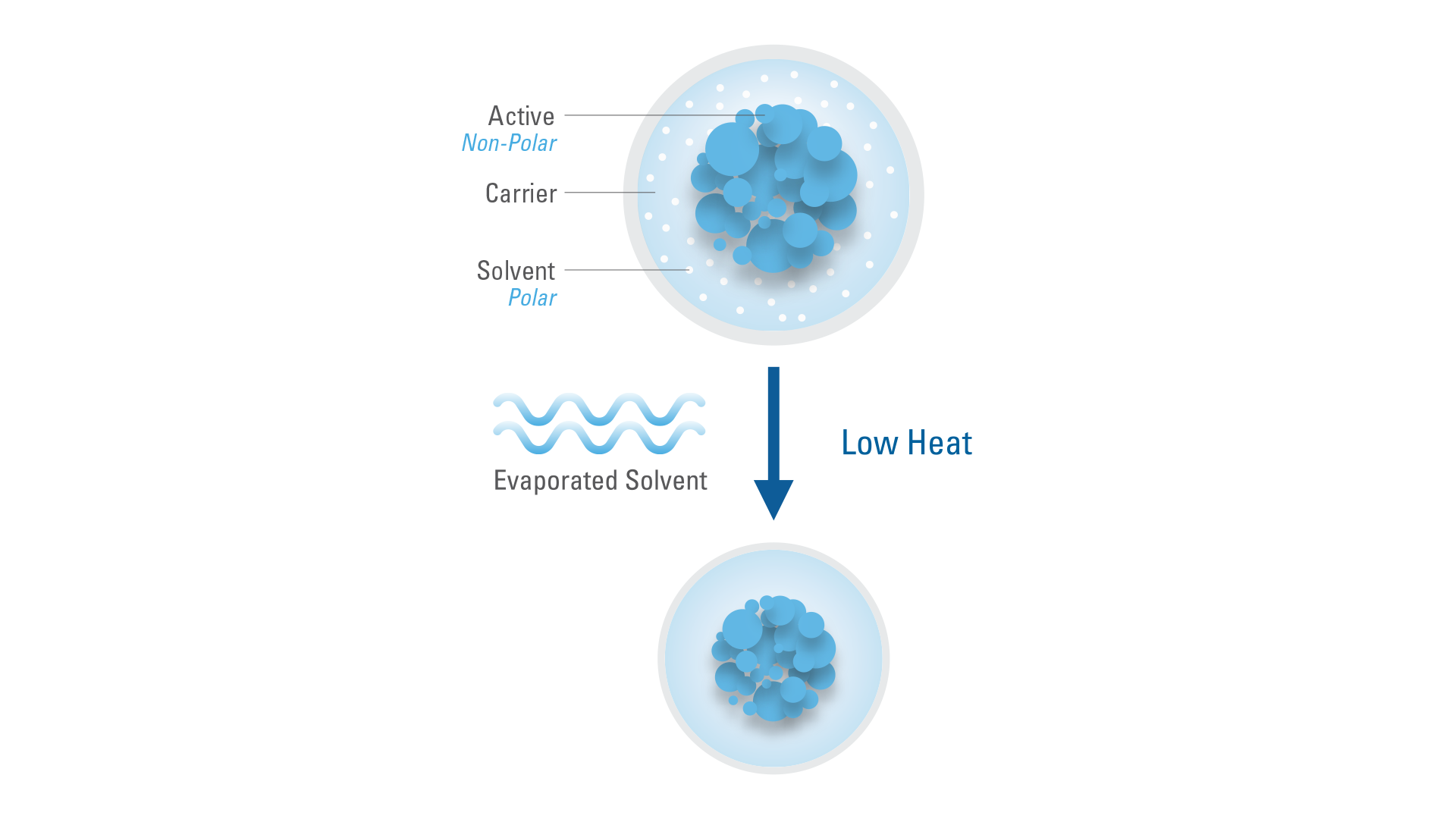
PolarDry Electrostatic Spray Drying and Microencapsulation
In microencapsulation, each emulsion component has differing polarities. When an electrostatic charge is applied, a more-polar solvent and carrier will have the largest electric dipole moment and a less-polar active will have a smaller dipole. The solvent molecules repel each other and the solid particles, forcing the solvent and carrier to migrate to the outer surface of the droplet while the active remains at the center.
Driving the solvent to the outer surface leads to near-perfect active encapsulation without high temperatures, which can help you develop more viable, stable products for your markets.
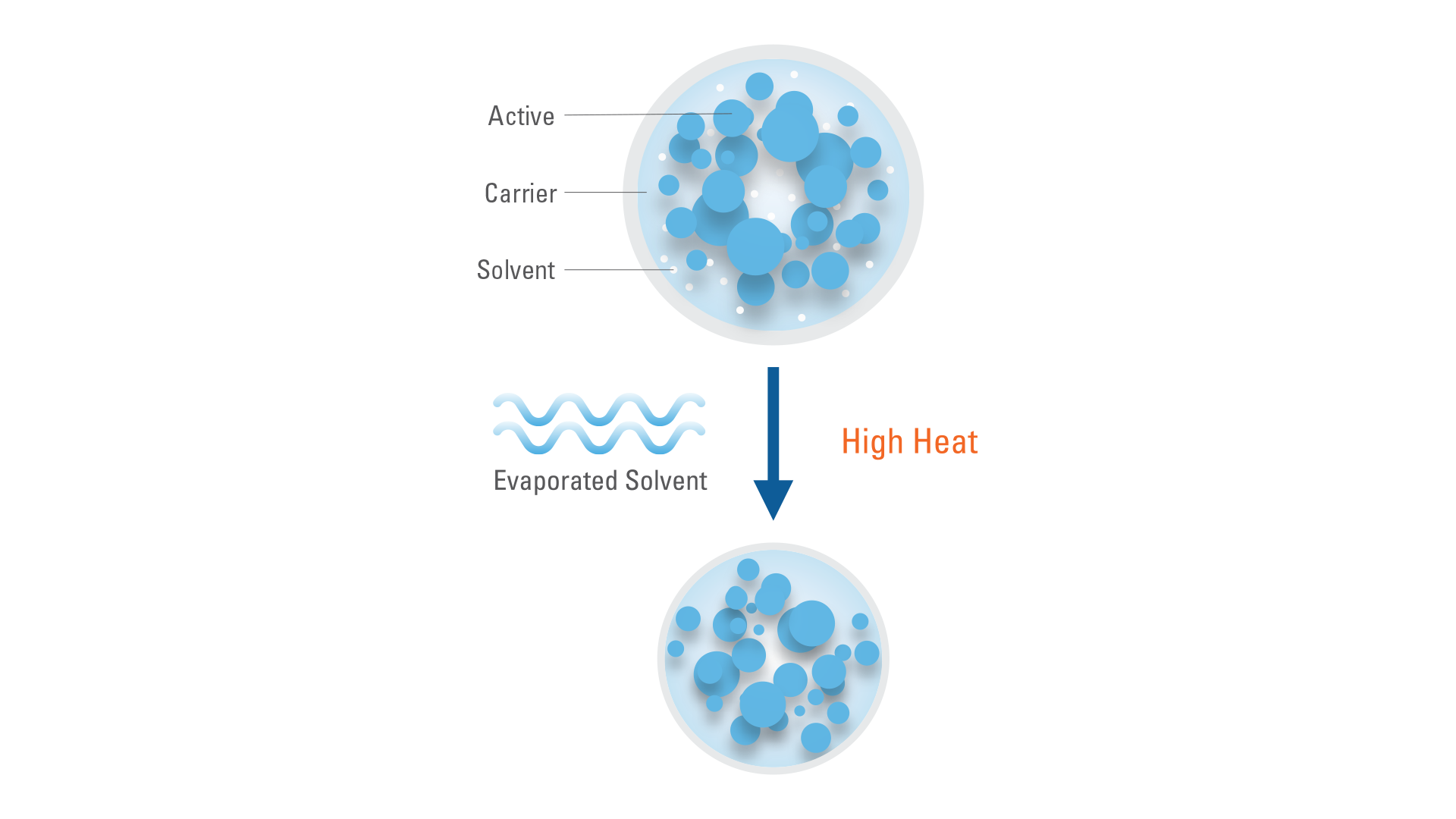
Challenges with Traditional Spray Drying
With the exception of electrostatic processes, spray drying technology has not advanced significantly since the late 19th century.
Typically, encapsulation in a traditional spray dryer uses an emulsion made up of a solvent, a starch-based carrier, and an active such as an oil or vitamin. The emulsion is atomized and 200°C or higher drying gas is introduced. Ideally, the object is to form a protective layer of carrier around the active, to keep the active from oxidizing, and dry off the solvent.
Unfortunately, the intense heat required for traditional spray drying can degrade the end product, especially for pharmaceuticals and nutraceuticals that deliver live microorganisms, plant extracts, or protein-based actives. What's more, this less-efficient approach can result in active trapped inside the droplet and on the surface, defeating the goal of microencapsulation.
.png?h=75&mh=150&w=358&hash=36844D2DB3DBD3A749E8E7C5AF4A49AA)

